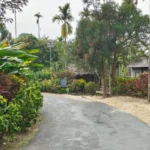
Trekking is one of the most joyous and fulfilling experiences that one can embark upon. Especially if you plan on setting foot onto the gorgeous Himalayas, then you are in for a treat. From breathtaking views to challenging avenues- Himalayas has everything. It can seduce you, lure you and then throw some of the most dangerous yet thrilling challenges at you.
Such is the charm of the Himalayas, that there was once a time when trekkers had to stand in a line to start their trek because it was so crowded.
However, one major challenge that trekkers or first-time trekkers face before they start their journey is what to pack and how to pack.
It is important to remember that your rucksack is like your other arm when you are trekking. You have to carry it everywhere, even when you climb. Thus, not only does it have to be lightweight, but also, it should have all the essential items that you need to take from one base camp to another. Thus, you need to pack extremely cautiously and smartly.
Here are some of the basic items that you must essentially pack for your Himalayan sojourn, and also few items to make you’re packing a little easier.

Clothing is one of the most important aspects when you are packing for the Himalayas. However, one mistake that people make often is that they carry too much. The trick is to pack smart and not pack too much.
Here are few of the basic items that you must pack for the Himalayas Tour:
You should start with a base layer top which you can wear for meow than one say.
Carry two or three thermal tops, and you have token layering yourself more and more as you climb greater altitudes.
One of the biggest things you need to effectively tackle is cold feet and hands. You need to carry good trekking socks and gloves which will keep your hands and feel insulated at all times.
But make sure socks, caps, gloves and other items like that shouldn’t weigh more than 500 grams in all. This will ensure that you are not over carrying and are packing smartly and travelling light.
Your fleece jackets, base thermals, and sweaters shouldn’t weigh more than a Kilogram.
Try and carry more synthetic t-shirts rather than cotton t-shirts. Synthetic tends to dry more easily and quickly than cotton tees. There are also lighter than cotton tees. Do not carry for than 4 to 5 tees on your Himalayan Journey.
For your legs too, carry synthetic pants more than jeans. You should carry jeans only if you can leave your luggage at the base camp, and do not have to climb with it.
For the evening you can carry one pair of light weighed jeans and a fleece. Make sure you also pack good enough trekking boots which have proper soles.
At times you need to give space and air to your feet after long hours of trekking. In that case, also pack crocs or trainers to give your feet that much-needed break from trekking.
Make sure you pack a windcheater with a hood. The weather can suddenly change and the winds can get cold and rough. In such a case, you must be prepared. Your windcheater will also have a water repellent property, so you do not need to carry an extra raincoat or poncho.
When you are packing your boots make sure you try them on before buying or packing. Ensure that the boots are good, comfortable and give adequate support to your ankle. Put on your trekking backpack and then wear those shoes to fully grasp how comfortable or not comfortable those boots are.
When you are trekking you must at least drink 4 to 5 litres of water. The water needs to be sterilised or boiled in such areas.
So make sure you carry water bottles or hydration bladders that will keep you hydrated.
Now, if you are planning a Himalayan Expedition tech and gears play an exceedingly essential role. These are the items that will facilitate your journey, and if you don’t have the proper tech you might even suffer injuries.
The good thing is that you do not need to carry every kind of toiletries or batteries on your trip. You can easily buy them when you reach there.
Get yourself a camera so that you can document your journey. Make sure the camera is waterproof. The Himalayas is blessed with some of the most amazing views and it would be a shame if you are unable to document and capture it.
If you wish to carry DSLRs, then you have to be ready to carry that extra weight. This can hamper your climb.
Make sure to carry extra batteries also and store them under your sleeping bag. This helps to keep the battery in good health. You can also carry your IPAD or Kindle, but there are book shops in the valley so you can easily pick up a book when you reach.
Mobile phones don’t work when you climb higher, but you can surely get a local sim card.
Other important trekking gears are:
When choosing and packing your accessories you need to be extremely careful. Be minimalistic and only carry what you need. Some basics are- toothpaste (small), tissue roll, lip balm, scissors, torch, soap strip, toothbrush, moisturiser, and Deo spray. This part of your luggage should not weigh more than 500 grams as well.
It is sacrosanct to carry a first aid kit when you are traversing the Himalayas. Make sure to carry items like – cotton, crepe bandage, an antiseptic cream, an antiseptic liquid, pain killers, anti inflammatory, digestive medicines, and a heating spray or a heating pad. You should also carry some medicines for altitude sickness, vomiting and stomach upset. Once again these items combined should not weigh more than 500 grams.
You can carry instant food items in case there is an emergency. Carry energy bars, candies, chocolates, dry fruits and a small bottle of any energy drink. This will keep both your spirits and energy high. These items together should not cross 500 grams.
Always make sure to carry a filled water bottle of at least 2 Litres. There will be times when water refilling points are scarce and rare to find. So you must have spare water stored.
There are specially made sleeping bags for Himalayan treks. These bags have a temperature rating between -10 C to 0 C. If you are experiencing lower temperatures, then just use another base layer inside while you go off to sleep.
The organization of the items inside your backpack:
Now, once you have decided what all you need to carry and sorted that out, the next part of the challenge comes. The next part is to successfully and effectively organise these items inside your backpack.
Always remember when you are trekking in the Himalayas you have to carry your backpack with you. So make sure you don’t have too much stuff inside it.
You need to make sure that the heavier items are kept closer to your body, which will make the weight a little easier to carry.
Make sure while hiking you pack in a way that you have easy access to items that you will need frequently. Like, water, windcheaters, snacks, chocolates and documents should be packed somewhere where you can easily fetch them out from.
The sleeping bag can rest at the bottom, as you will only need it when you reach a campsite or a base camp. You should also put your heavy boots at the bottom so that the weight is distributed properly.
The pockets at the side of the backpack can be used for smaller snacks, toiletries, sunglasses, first aid kids and maps.
Make sure you buy a sturdy and good rucksack, which is also waterproof. The items inside your rucksack should never get wet.
One of the most important things to pack for the Himalayas which is often overlooked is the documentation. You need to carry the required paperwork, like photo ids, or passports when you are trekking. There can be random checks wherein you have to show all of this. You should also carry good enough cash and your debit or credit cards.
A trekking trip to the Himalayas is one of the most divine and enchanting things that any person can undertake in their lifetime. To make this journey more joyous, just lay back and put a smile on your face. It is just ethereal to be climbing and traversing through these intimidating mountains, so just strap on, check your kit and climb on without any fear!

Best Places to Visit in Dubai with Kids
12 Jul 2025
India’s Finest Luxury Retreats: The Ultimate Hotel & Resort Collection
01 Jul 2025
Taj Holidays’ Wildlife Retreats: Where Nature Roars and Luxury Whispers
30 Jun 2025
10 Indian Art Forms You Can Experience During Travel
29 Jun 2025
12 Most Beautiful Villages in India Worth Visiting
28 Jun 2025